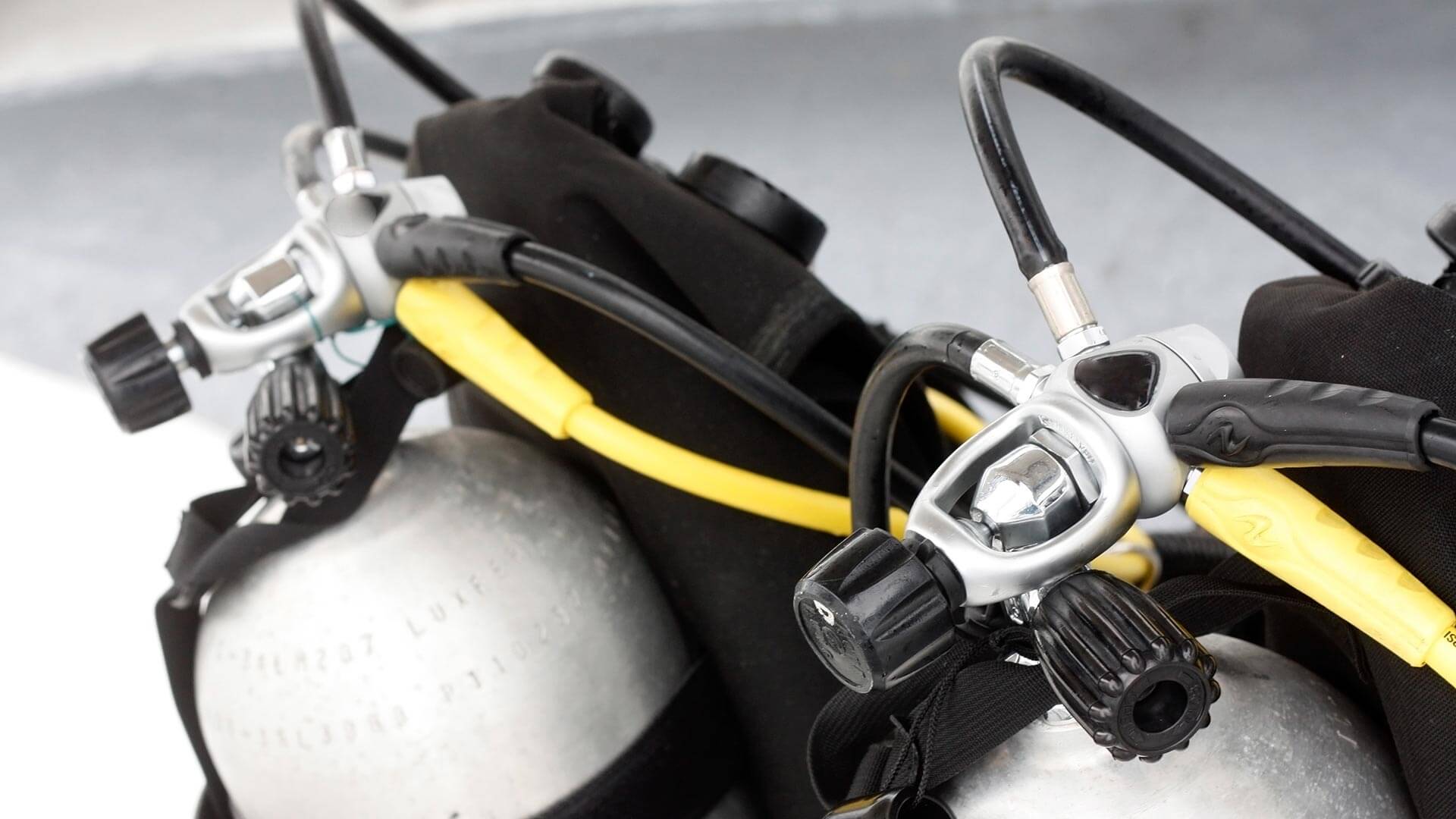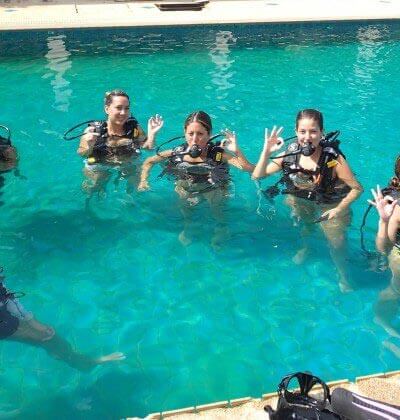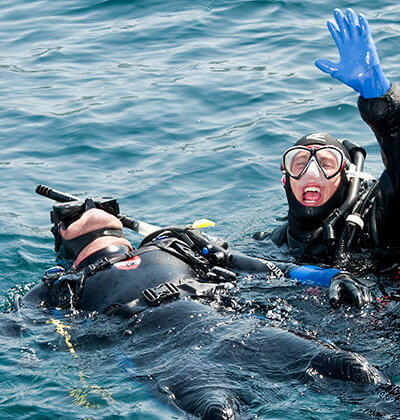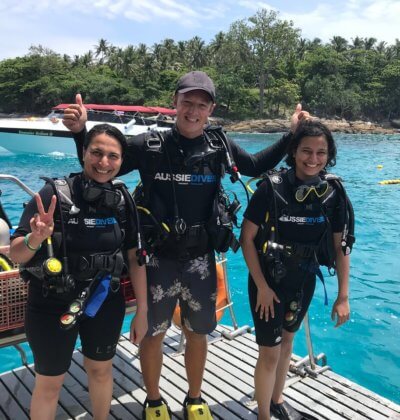How long will my scuba tank last?
A question we often get asked is how long will my scuba tank last? Unfortunately there is no simple answer to that question as there are a few variables. Hopefully in this blog we can help answer that question.
Understanding Air Consumption Needs
Your breathing rate depends on your level of exercise (energy output) and the depth that you dive.
The higher your level of exercise, the harder you work, the more oxygen you need and the more Carbon Dioxide (CO2) you will produce. In order to remove the CO2 from your lungs while scuba diving, you must inhale air. So, the more exercise you do under the water the more you will breathe, and the quicker you will use your air.
The chart below shows the relationship between depth, pressure, exercise and air requirements. The deeper the depth and the higher the level of exercise, the greater the demand for breathing gas.
Air Usage: Exercise and Depth (litres per minute)
| Depth | Pressure (Atmospheres) | Air Needs (Resting) | Air Needs (Light/Moderate Exercise) | Air Needs (Vigorous Exercise) |
|---|---|---|---|---|
| 0 Metres (Surface) | 1 ATM | 8 lpm | 20 lpm | 70 lpm |
| 10 metres | 2 ATM | 16 lpm | 40 lpm | 140 lpm |
| 20 metres | 3 ATM | 24 lpm | 60 lpm | 210 lpm |
| 30 metres | 4 ATM | 32 lpm | 80 lpm | 280 lpm |
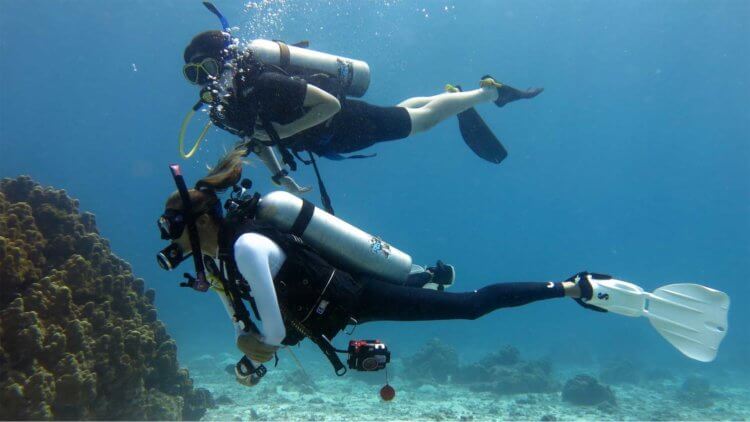
Aussie Divers Phuket Good Buoyancy
Let Aussie Divers Improve Your Air Consumption: Contact Us
How do Divers Know How Much Air They Use?
Divers predict how much air the use using what they call “SAC Rate” or “Surface Air Consumption Rate”. There are a number of ways a diver can work out their SAC rate.
The easiest way is underwater on a normal dive. It requires the diver to accurately measure the air they use, the time they dive and their average depth. Divide the total air consumed by the total time in minutes of the dive. This gives you the consumption per minute. Take the consumption per minute and multiply that by the total pressure of the average depth of your dive.
Another way is on the surface. You can kit up and perform light exercise at about the same as you would underwater. Divide the total air consumed by the total time in minutes of exercise.
How Much Air is in a Scuba Tank?
The Aluminum 80 is the most commonly used tank and internal tank volume: 11.1 liters. The Maximum pressure allowed in the tank is 207 bar.
The formula for finding the amount of compressed air in the cylinder is quite easy. It is the pressure multiplied by the volume or 207 bar x 11.1 litres = 2,297.7 litres.
How Long Will My Air Last in a Standard Aluminum Cylinder (S80)?
Using the litres per minute rate on the above graph we can then apply it to this graph.
Air Usage: Exercise and Depth
| Depth | Pressure (Atmospheres) | Air Needs (Resting) | Air Needs (Light/Moderate Exercise) | Air Needs (Vigorous Exercise) |
|---|---|---|---|---|
| 0 Metres (Surface) | 1 ATM | 215 minutes | 70 minutes | 20 minutes |
| 10 metres | 2 ATM | 107 minutes | 35 minutes | 10 minutes |
| 20 metres | 3 ATM | 71 minutes | 23 minutes | 6 minutes |
| 30 metres | 4 ATM | 53 minutes | 17 minutes | 5 minutes |
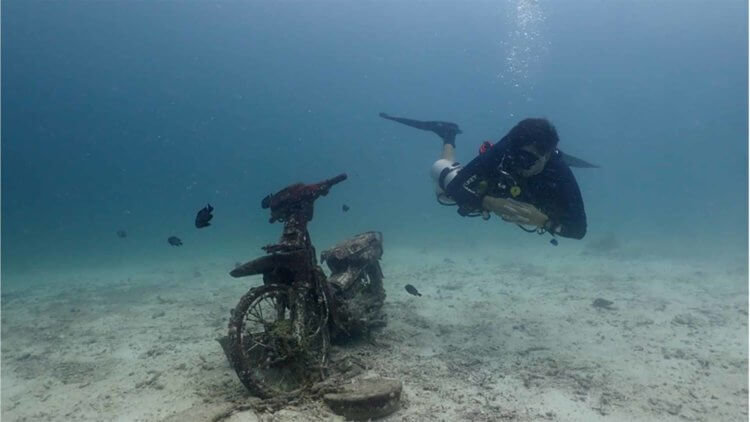
PADI Sidemount Aussie Divers
Other Factors That Can Increase Air Consumption.
- Stress
- Exertion
- Buoyancy
- Coldness
- Equipment
Stress has a major influence on how much air you use. We have all seen new divers who are nervous breath a lot of air. It is why instructors should check air more frequently with new and nervous divers. Relaxing is the best way to reduce air consumption but is often easier said than done.
Battling against a strong current will most definitely increase air consumption. However, unnecessary body movements also add to air consumption. Often new divers use hands as well as fins or excited divers quickly from one place to another, both add to increased air consumption. Slow and steady is the best way to keep your air consumption to a minimum.
Poor buoyancy and over or underweighting will cause increase usage of air. The constant moving and correction of buoyancy and regular inflating and deflating the BCD wastes air. Overweighting is a hidden killer of good air control. Proper weighting will save air.
The colder you are, the more air you will breathe as your body warms your core. Make sure that you have ample thermal protection during a dive.
Good equipment, especially a quality pair of fins will save energy and air. Further, equipment in poor condition and leaking will increase air loss and your overall all consumption. Make sure you equipment is in good working order and appropriate for the dive that you are undertaking.
Let Aussie Divers Improve Your Air Consumption: Contact Us
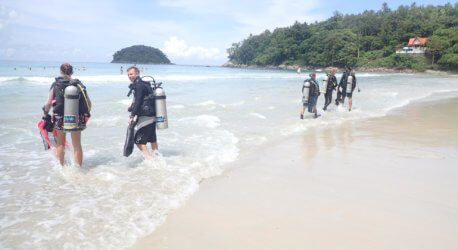
Kata Beach Dive Aussie Divers Phuket
Posted in Helpful Diving Info on .

